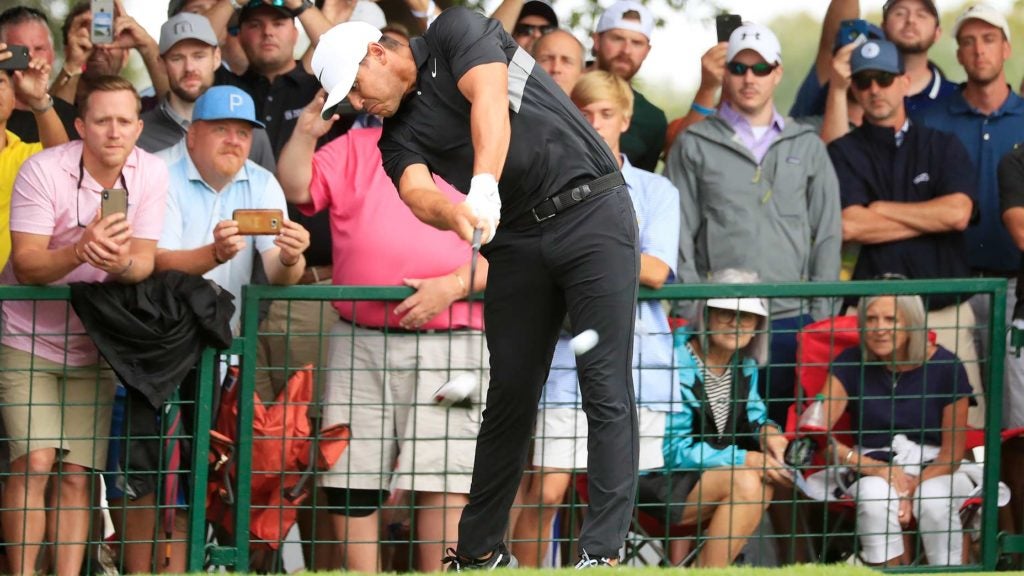Welcome to a three-part series in which Michael Carroll, a Level 3 TPI certified fitness coach and purveyor of the popular golf fitness blog and Twitter account Fit for Golf, breaks down the importance of mobility, stability and strength in the golf swing.
In the first installment of this series, I discussed the importance of mobility for the golf swing and how you can improve your mobility.
Now, I’m here to dispel a long held myth: Strength training is bad for golfers.
Everyone points to Tiger Woods as the cautionary tale of the havoc strength training can wreak on a golfer’s body. However, Tiger himself recently admitted that his training methods when he was younger may not have been the wisest, and cited excessive amounts of running as a big reason his body broke down over the course of his career.
Adding strength to your body once you’ve improved your mobility has a plethora of benefits for your game. Think better swing mechanics, more club head speed, less aches and pains and more endurance coming down the stretch.
The belief that strength training is bad for golfers is rooted in the idea that it would bulk them up, leading to a loss of the mobility required to swing a golf club well.
This couldn’t be further from the truth. If the fact that almost all of today’s top golfers like Rory McIlroy and Brooks Kopeka do some sort of strength training doesn’t convince you, the fact that building muscle is a process that takes time should.
Strength training burns a lot of calories and can actually be a great way to lose fat while developing muscle. Developing that muscle is a slow and difficult process, meaning that you won’t bulk up and ruin your game overnight.
It’s taken Bryson DeChambeau nearly nine months of intense training and nutrition to bulk up the way he has.
Most people over the age of 30 lose muscle mass, and as a result, strength. Every golfer will at some point in their life be over the age of 30, so it’s extremely important for quality of golf, and quality of life, to actively strength train.
For amateur golfers, the easiest way to lower scores is to increase their number of greens in regulation. If you can increase your club head speed and driving distance by getting stronger, you will be closer to the hole, making it easier to put the ball on the green.
Strength is also the foundation for power. If you can build up your strength, it becomes easier for you to produce force in the golf swing. For a golfer, building strength has less to do with getting swole and more to do with improving your body’s ability to recruit your fast twitch muscle fibers. These are the muscles responsible for explosive movements like the golf swing and will have you driving it way past your playing partners.
Building strength doesn’t require lifting heavy weights either. Performing this four-exercise resistance band routine three times per week will have you walking and extra 20-30 yards up the fairway in no time.
